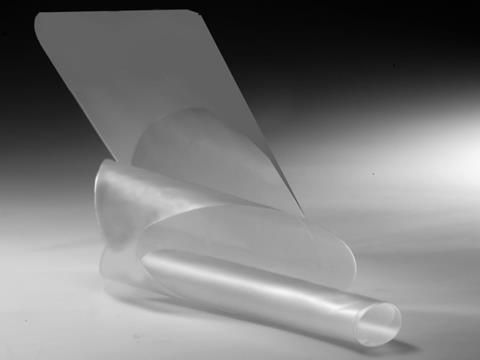
Plastic packaging has a lower rate of recycling than other materials. More needs to be done to ensure that even more plastic packaging can be recycled.
Fachpack spoke with Sven Sängerlaub, Business Development Manager Packaging at the Fraunhofer Institute for Process Engineering and Packaging (IVV), about the part played by packaging design in improving the recyclability of plastic packaging.
Where do you currently see the greatest movement in sustainable packaging design?
Sven Sängerlaub: The revised Packaging Act provides an important stimulus for packaging design. This specifies higher recycling rates for plastic packaging, which will rise to 63 percent by 2022. There is also increased environmental awareness among consumers and businesses. This is why manufacturers are dealing in greater depth with the subject of eco design, and looking at how they can structure their packaging to make it more recyclable. This includes developing packaging whose components or individual layers are easier to separate during the recycling process.
What kind of packaging are we talking about in this case?
Sven Sängerlaub: One example is sleeves or shrink labels, which are easy to separate from the packaging. Another option is monomaterials, which are suitable for detergent bottles. Materials that are mutually compatible and do not have a negative impact on the recycling process are also relevant. Bonding agents that do not disrupt the recycling process can be used, for example, because they are compatible with other polymers used in packaging. Transparent inorganic coatings also have minimal impact on the recycling process. These could potentially be used to replace barrier layers in packaging that are less recyclable.One subject for our research is the separability of multi-layer composites in the recycling process using moisture and enzymes. We are developing soluble barrier and other layers for the purpose. Recyclability and material efficiency also have positive economic effects for manufacturers: if it is easier to recycle the packaging waste that is generated in the manufacturing process, through use as regrind, for example, then the disposal costs will be lower.
Where do you see major potential for the use of recycled plastic? What effect does its use have on packaging design?
Sven Sängerlaub: Currently, it is possible to recycle PET bottles in such a way that the PET is approved for direct contact with foodstuffs. In this case we have the industrial metabolism process in hand and can produce pure plastics. With PET, the bottle deposit system makes it particularly easy to keep an eye on the recycling process.But if the recycling material comes from Germany’s ‘yellow recycling bag’ category, the process is a lot harder. With these post-consumer plastics, an off-smell caused by oxidised foodstuffs and fat is a big problem. We are analysing this off-smell to work out counter measures. In addition, the mixture of recycled end material in this case is not always as good as with conventional plastics.These materials are not suitable for use as foodstuff packaging. But their quality has been improved to the point that they can be used for other applications. A current example is provided by Werner & Mertz, with their ‘Frosch’ brand: they use recycled plastic to make containers for their cleaning agents. We can also mention Henkel, and the packaging it uses for its cleaning agents.One tool to improve recyclability is shelf-life modelling. Some products do not need a long shelf life at all, because they sell very quickly. In these cases, the demands on the barrier do not have to be as stringent. This can sometimes make it possible to use a more recyclable composition. We are observing greater demand for shelf-life modelling to help improve recyclability.

What contribution can bioplastics in packaging already make today?
Sven Sängerlaub: We are optimising biopolymers from PLA and PHA using additives and process improvements and making packaging from these substances. Subjects here are extrusion coating for paper, multi-layer composites and barrier optimisation.Other biopolymers, in other words those made from whey or alginate, for example, which we are working on at the Fraunhofer Institute, can be used to make barrier layers. They provide an oxygen barrier in the packaging. At the same time, we obtain biological waxes from plant leaves, which can act as a steam barrier in foodstuff packaging. We have obtained technologically good results in this area. The next step involves bringing these applications into the pilot application. Then we want to introduce these materials into industrial practice. In the long term, even more raw materials should be drawn from waste products, like waste from foodstuff production.Waxes are suitable for coating paper, for example. The basic thinking is to enhance the paper so it can replace layers of film. Potential applications are packet soups or packaging for sausages, for example. The barrier effect of bioplastics can sometimes be very good now, although there is still some catching up to do in making them easier to process and making the processes competitive.
What contribution do you think you can make in the future?
Sven Sängerlaub: For the foreseeable future, bioplastics will be more costly than conventional plastics. The price is put in perspective when you consider the aspect of functionality. Consumers must be prepared to pay more attention to packaging. They need to show greater appreciation for more environmentally friendly packaging. Ultimately, packaging protects the contents, and thus valuable resources. So price is not the only factor: we also need to look at whether consumers will still be attracted if the packaging is not shiny or transparent. We also observe, however, that consumers will lower their expectations of visual appearance if they understand that the product is more environmentally friendly. But of course, it is important for them to know that that is the case.Our job in research is to improve these qualities and overcome obstacles. It is important to make layers thinner and materials more efficient, while improving functionalities. We are still far from exhausting all the potentials.
More info:











